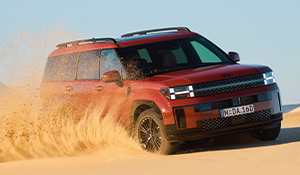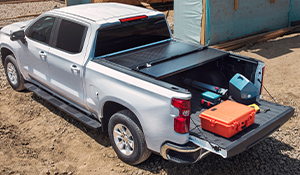ADVICE - Driving in Fog
Words and Photos: via PracticalMotoring.com.au
Winter is coming, which means foggy mornings (and sometimes afternoons) are coming, too. That being said, depending on where you live in Australia, fog can occur all year round. Here’s how to drive to the conditions.
Yes, fog is much more of a “winter” thing, but it can roll in at other times of the year, in isolated patches and random places, too. Where you live will mean you’re more or less likely to cop fog, be it in the winter or summer months.

Foggy mornings, especially when they come after a long period without fog, can throw people off guard. I’ve personally seen many drivers seemingly have no idea what to do when they encounter a misty morning – especially when the fog is thick.
In off-road driving, the low speeds you’re usually driving at make fog much less of a hazard, but the sealed and/or gravel roads taken to get to those trails can be a completely different story and require much more caution in foggy conditions.
On road or off, the key thing to remember when driving in fog is that visibility might mean different things to different people.
Speaking in on-road terms, the law says fog lights can only be used when visibility is down to 100 metres, but a good rule of thumb is, when you’re travelling behind someone in fog and thinking it would be nice if they had their fog lights on, then that probably means you should turn yours on.

What is fog?
Fog is basically just a cloud that’s formed at ground level instead of up in the sky. It consists of very small droplets of water that float in the air. There’s always water in the air, but depending on the temperature, it alters how much water the air can hold.
If the air begins to cool suddenly and is fully saturated with water vapour, then the air will lose the ability to hold all that moisture, causing some of it to condense around tiny particles of dust in the air, forming droplets. If you have enough of these droplets, then you end up with fog.

Tips for Fog
Here are five tips to make sure, the next time you’re driving in fog, you’ll get safely to where you want to go. These apply primarily to road driving, but can also be used off-road.
1. Switch on your fog lights.
A lot of 4x4s, SUVs and passenger cars now have daytime running lights, which generally activate automatically whenever the ignition is on. These are not the same as fog lights. Most cars have at least two fog lights at the front with one rear foglight as standard.
Turn your foglights on the moment you spot the fog or mist, as it will make your car more visible.
Don’t rely on your main driving lights, although you should absolutely have these on in fog, or heavy rain. And don’t use your high beams when driving in fog, as they will reflect back off the fog, making it harder to see or be seen.
Unlike daytime running lights, foglights can only be used legally when visibility drops to less than 100m. So, make sure you know where the switch is for your car’s foglights and double-check your insurance policy, as some might void your cover if it’s found you didn’t have your foglights on and are involved in a collision.
2. Watch your speed.
Once you’ve turned on your foglights, depending on the density of the fog and the reduction in visibility, it might be wise to knock 10 to 20km/h - or more - off your speed. The reason is simple: you won’t be able to see as well when driving in fog and so will have less time to react.

3. Keep your distance.
This hangs off the speed monitoring point above. Basically, with the reduced visibility of driving in fog comes a greater risk of collision. You need to be prepared for anything and so giving yourself more room between you and the car in front will give you more time to react.
4. Do you have to drive now?
Like driving in heavy rain, driving in thick fog can be a little daunting for some drivers. And, so, I’d suggest that if you absolutely don’t have to go out onto the road in fog, then don’t. And the same goes for heavy rain, although in that instance I’d suggest, that if you get caught in a sudden and severe rainstorm when you’re already on the road, you should pull over somewhere safe and wait for it to pass.
5. Turn off your lights.
Your foglights, that is. Once the fog has cleared, or you’ve arrived at your destination, then make sure you switch off your foglights. If you don’t, and you’re caught driving with them on by the police, and there’s no fog, then you may be fined.









